NASA’s Juno Probe Reveals Jupiter’s Mysteries In Breathtaking Images
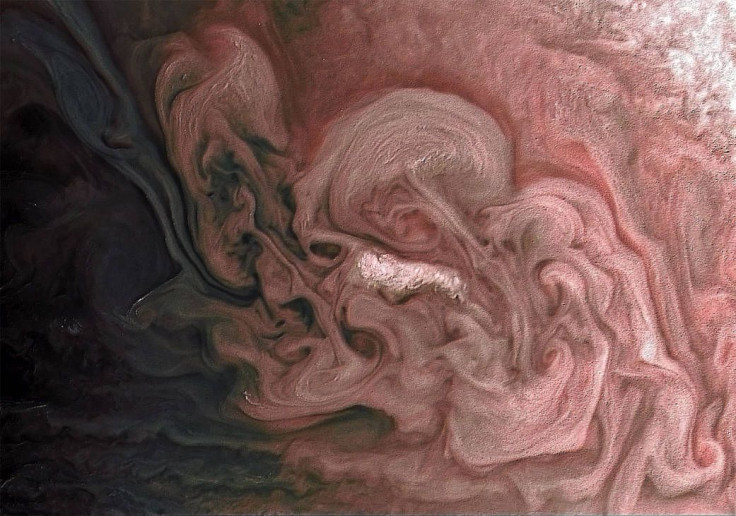
NASA’s Juno spacecraft has been taking some incredibly beautiful images of the biggest planet in our solar system – Jupiter. Juno was launched in 2011 and ended its long journey to Jupiter in 2016. The spacecraft has since been orbiting above the gas giant’s cloud tops, gathering data about the planet’s powerful magnetic field, swirling storms and more.
The data collected by Juno is expected to help scientists better understand Jupiter’s origins and evolution, as well as help researchers determine any possible presence of water and ammonia in the atmosphere.
Jupiter’s rose-hued storm
The latest image captured by the JunoCam instrument aboard the Juno probe, shows a close-up view of one of Jupiter’s swirling storms brewing in the northern hemisphere. The image was captured by Juno on 7 Feb, during its 11th flyby, as it hovered around 7,578 miles above the planet’s cloud tops. The rose-hued image of the massive storm reveals Jupiter in a completely new light.
“Citizen scientist Matt Brealey processed the image using data from the JunoCam imager. Citizen scientist Gustavo B C then adjusted colors and embossed Matt Brealey's processing of this storm,” NASA said in a statement.
Jupiter’s Jovian Twilight Zone
During the same flyby and on the same day, Juno captured another amazing image of Jupiter’s swirling cloud formations around the south pole. The image, which NASA shared earlier in the month, was taken when the spacecraft was 74,896 miles away from the top of Jupiter’s clouds.
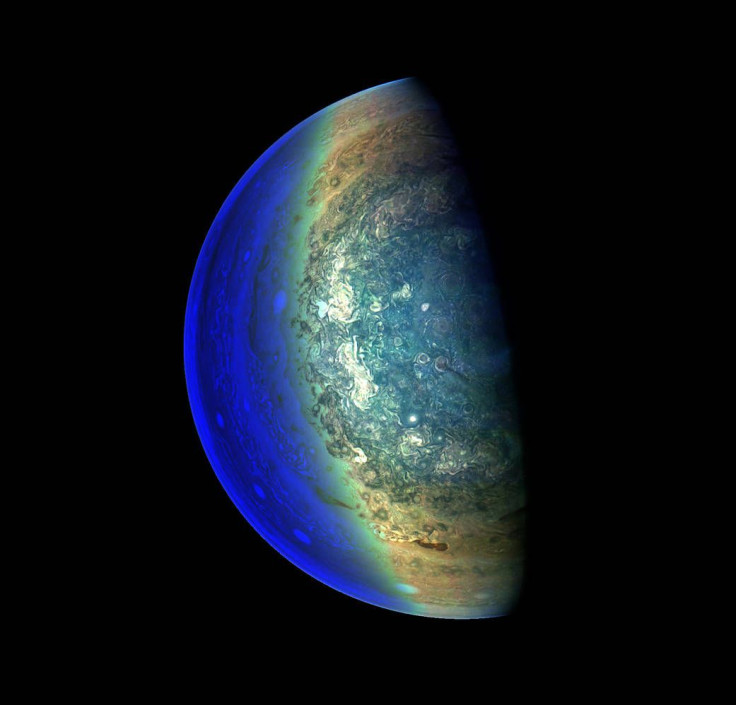
“Citizen scientist Gerald Eichstädt processed this image using data from the JunoCam imager,” NASA said in a statement. “To make features more visible in Jupiter’s terminator — the region where day meets night — the Juno team adjusted JunoCam so that it would perform like a portrait photographer taking multiple photos at different exposures, hoping to capture one image with the intended light balance. For JunoCam to collect enough light to reveal features in Jupiter’s dark twilight zone, the much brighter illuminated day-side of Jupiter becomes overexposed with the higher exposure.”
Jupiter’s Multicolored Cloud Belts
In December 2017, during its 10th flyby of Jupiter, Juno captured yet another image that showed the gas giant’s colorful cloud belts. Juno was around 8,453 miles above Jupiter’s cloud tops when it shot the image, which was then processed by citizen scientist Kevin M. Gill.
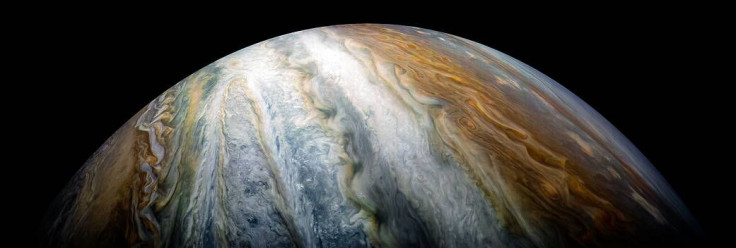
“The dark region in the far left is called the South Temperate Belt. Intersecting the belt is a ghost-like feature of slithering white clouds,” NASA said. “This is the largest feature in Jupiter’s low latitudes that’s a cyclone (rotating with clockwise motion).”
Jupiter’s Blues
On its ninth flyby, Juno captured an image of Jupiter’s cloud system in extraordinary shades of blue. The image was captured in October 2017, when the spacecraft was flying around 11,747 miles above Jupiter’s cloud tops.
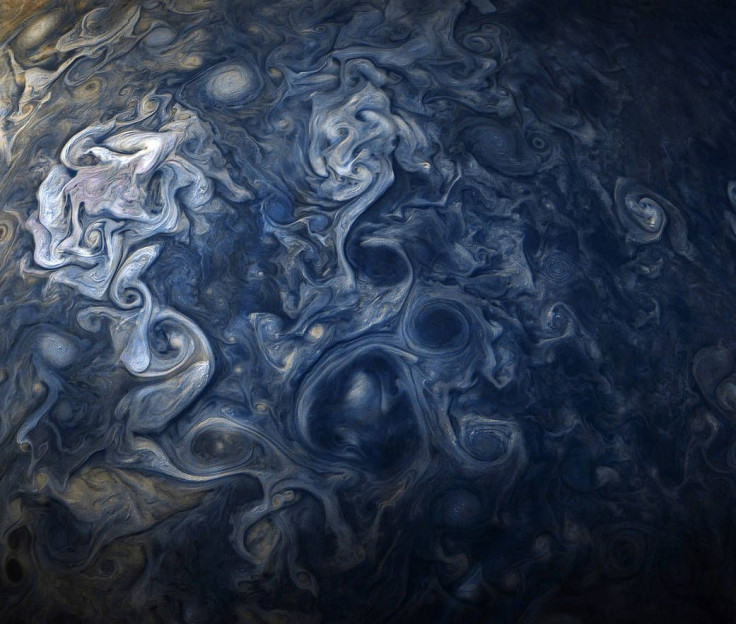
The image was processed by citizen scientists Gerald Eichstädt and Seán Doran. “Because of the Juno-Jupiter-Sun angle when the spacecraft captured this image, the higher-altitude clouds can be seen casting shadows on their surroundings. The behavior is most easily observable in the whitest regions in the image, but also in a few isolated spots in both the bottom and right areas of the image,” NASA said.
Jupiter’s Jet Streams
Earlier this month, NASA released a stunning image of Jupiter’s nine cyclones that are currently churning rapidly at the planet’s north pole. The image shows the central cyclone surrounded by eight other cyclones and was taken by the Jovian Infrared Auroral Mapper (JIRAM) instrument aboard Juno.
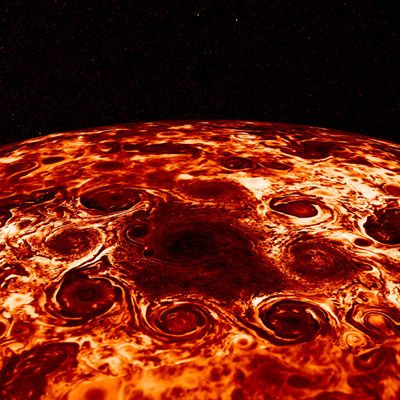
One of Juno’s primary mission objectives is to peer through Jupiter’s dense atmosphere and measure its temperature, composition, cloud movements and more. The spacecraft is expected to continue orbiting Jupiter through July 2018. However, it is currently unclear if NASA will extend its mission or choose to shut it down once its 12 orbits are completed.
© Copyright IBTimes 2024. All rights reserved.





















